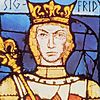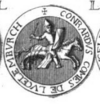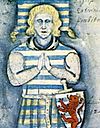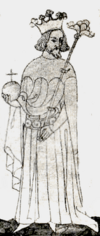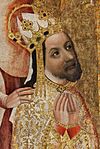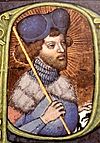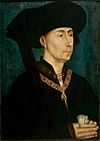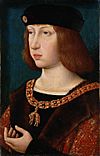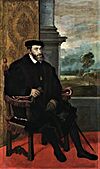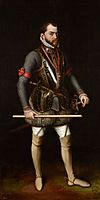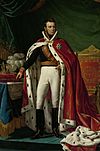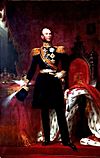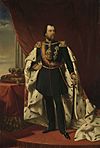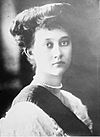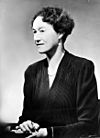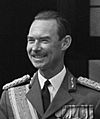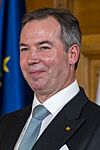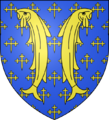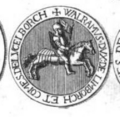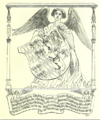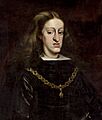List of monarchs of Luxembourg facts for kids
The territory of Luxembourg has been led by different rulers throughout history. It was first governed by counts, then by dukes, and now by grand dukes. Luxembourg was part of the medieval Kingdom of Germany and later the Holy Roman Empire before it became an independent country in 1815.
Contents
Luxembourg's Early Rulers: Counts and Dukes
The Counts of Luxembourg
For many centuries, Luxembourg was known as a "county," and its leaders were called Counts. These counts played a big role in shaping the region.
The First Counts: House of Ardenne–Luxembourg
The story of Luxembourg's rulers begins with Siegfried, who became the first Count around 963. He is often seen as the founder of Luxembourg. His family, the House of Ardenne–Luxembourg, ruled for a long time, helping to establish the area.
| Image | Name | Reign | Relationship |
|---|---|---|---|
| Siegfried | 963 – 998 | Founder of the County | |
| Henry I | 998 – 1026 | His son | |
| Conrad I | 1059 – 1086 | His son |
- Note: Many other counts ruled during this period, continuing the family line.*
Later Counts: House of Luxembourg–Limburg
After several changes in ruling families, the House of Luxembourg–Limburg took over. One important ruler from this family was Henry V, known as "the Blond." He ruled from 1247 to 1281. His descendants continued to rule, including John "the Blind", a famous knight who was also King of Bohemia.
| Image | Name | Reign | Relationship |
|---|---|---|---|
| Henry V the Blond |
1247 – 1281 | Son of Ermesinde II | |
| John the Blind |
1313 – 1346 | His grandson | |
| Charles IV | 1346 – 1353 | His son |
From County to Duchy: The Dukes of Luxembourg
In 1354, Luxembourg's status changed. It was no longer just a county but became a more important territory called a "duchy." This meant its rulers were now known as Dukes.
The First Dukes: House of Luxembourg-Limburg
Wenceslaus I was the first Duke of Luxembourg. He was the brother of Emperor Charles IV.
| Image | Name | Reign | Relationship |
|---|---|---|---|
| Wenceslaus I | 1354 – 1383 | First Duke | |
| Wenceslaus II the Lazy |
1383 – 1388 | His nephew |
Changes in Leadership: Valois-Burgundy and Habsburg
Over the next centuries, Luxembourg saw many changes in its rulers. The Duchy was sold to Philip III, Duke of Burgundy in 1441, though he only officially became Duke later. His son, Charles II "the Bold", officially took the title in 1467.
Later, in 1482, Luxembourg became part of the powerful House of Habsburg family. This family ruled large parts of Europe. After Emperor Charles V stepped down, the Spanish branch of the Habsburgs ruled Luxembourg.
| Image | Name | Reign | Relationship |
|---|---|---|---|
| Philip I "the Good" |
1443 – 1467 | Acquired Luxembourg | |
| Charles II "the Bold" |
1467 – 1477 | His son |
| Image | Name | Reign | Relationship |
|---|---|---|---|
| Philip II "the Handsome" |
1482 – 1506 | Son of Mary I and Maximilian I | |
| Charles III "the Golden" |
1506 – 1556 | His son | |
| Philip III "the Prudent" |
1556 – 1598 | His son |
- Note: Luxembourg was also ruled by the Austrian branch of the Habsburgs and briefly by the House of Bourbon and House of Wittelsbach during conflicts like the War of Spanish Succession.*
Between 1794 and 1813, French revolutionaries occupied Luxembourg. After this period, at the Congress of Vienna in 1815, Luxembourg was given a new, higher status: it became a "Grand Duchy." It was then linked to the Netherlands under the House of Orange-Nassau.
The Grand Dukes of Luxembourg
Today, Luxembourg is the only country in the world that is still a sovereign grand duchy. This means its head of state is a Grand Duke or Grand Duchess.
The Luxembourg constitution explains the Grand Duke's role:
The grand duke is the head of state, a symbol of its unity, and a protector of national independence. He uses executive power according to the Constitution and the country's laws.
While the Grand Duke once had a lot of power, today their role is mostly symbolic. They represent the country and act on the advice of the government. This change happened gradually, with important updates to the constitution in 1919.
House of Orange-Nassau
The first Grand Dukes of Luxembourg were also Kings of the Netherlands. They belonged to the House of Orange-Nassau.
| Image | Name | Reign | Relationship |
|---|---|---|---|
| Willem I | 1815 – 1840 | First Grand Duke | |
| Willem II | 1840 – 1849 | His son | |
| Willem III | 1849 – 1890 | His son |
House of Nassau-Weilburg
When Grand Duke William III passed away in 1890, he had no sons, only a daughter, Wilhelmina. While Wilhelmina became Queen of the Netherlands, Luxembourg had a special rule called the "Nassau Family Pact." This rule meant that if there were no male heirs in the direct line, the crown would pass to a male from another branch of the Nassau family.
So, the crown of Luxembourg went to Adolphe, who was from the Nassau-Weilburg branch.
Later, Adolphe's son, William IV, also had no sons. He made sure that his eldest daughter, Marie-Adélaïde, could become Grand Duchess. She was the first female ruler of Luxembourg.
After Marie-Adélaïde stepped down in 1919, her younger sister, Charlotte, became Grand Duchess. Her descendants have ruled Luxembourg ever since.
| Name and Reign | Portrait | Birth | Marriages | Death | Succession |
|---|---|---|---|---|---|
| Adolphe 1890 – 1905 |
24 July 1817 Wiesbaden (Prussia) |
(1) Grand Duchess Elizabeth Mikhailovna of Russia (2) Princess Adelheid-Marie of Anhalt-Dessau [5 children] |
17 November 1905 Colmar-Berg |
William III's cousin | |
| William IV 1905 – 1912 |
22 April 1852 Wiesbaden (Prussia) |
Infanta Marie Anne of Portugal [6 children] |
25 February 1912 Colmar-Berg |
His eldest child | |
| Marie-Adélaïde 1912 – 1919 (abdicated) |
14 June 1894 Colmar-Berg |
Unmarried [childless] |
24 January 1924 Lenggries (Germany) |
His eldest daughter | |
| Charlotte 1919 – 1964 (abdicated) |
23 January 1896 Colmar-Berg |
Prince Felix of Bourbon-Parma [6 children] |
9 July 1985 Fischbach |
Her second daughter | |
| Jean 1964 – 2000 (abdicated) |
5 January 1921 Colmar-Berg |
Princess Joséphine Charlotte of Belgium [5 children] |
23 April 2019 Luxembourg City |
Her eldest child | |
| Henri 2000 – 2025 (abdicated) |
16 April 1955 Betzdorf |
María Teresa Mestre y Batista [5 children] |
living | His eldest son | |
| Guillaume V 2025 – present |
11 November 1981 | Countess Stéphanie de Lannoy [2 children] |
living | His eldest son |
Timeline of Grand Dukes of Luxembourg since 1815

Images for kids
See also
 In Spanish: Anexo:Soberanos de Luxemburgo para niños
In Spanish: Anexo:Soberanos de Luxemburgo para niños
- Coat of arms of Luxembourg
- Duchy of Luxembourg
- Grand Ducal Family of Luxembourg
- History of Luxembourg
- Line of succession to the throne of Luxembourg
- List of consorts of Luxembourg
- List of prime ministers of Luxembourg


